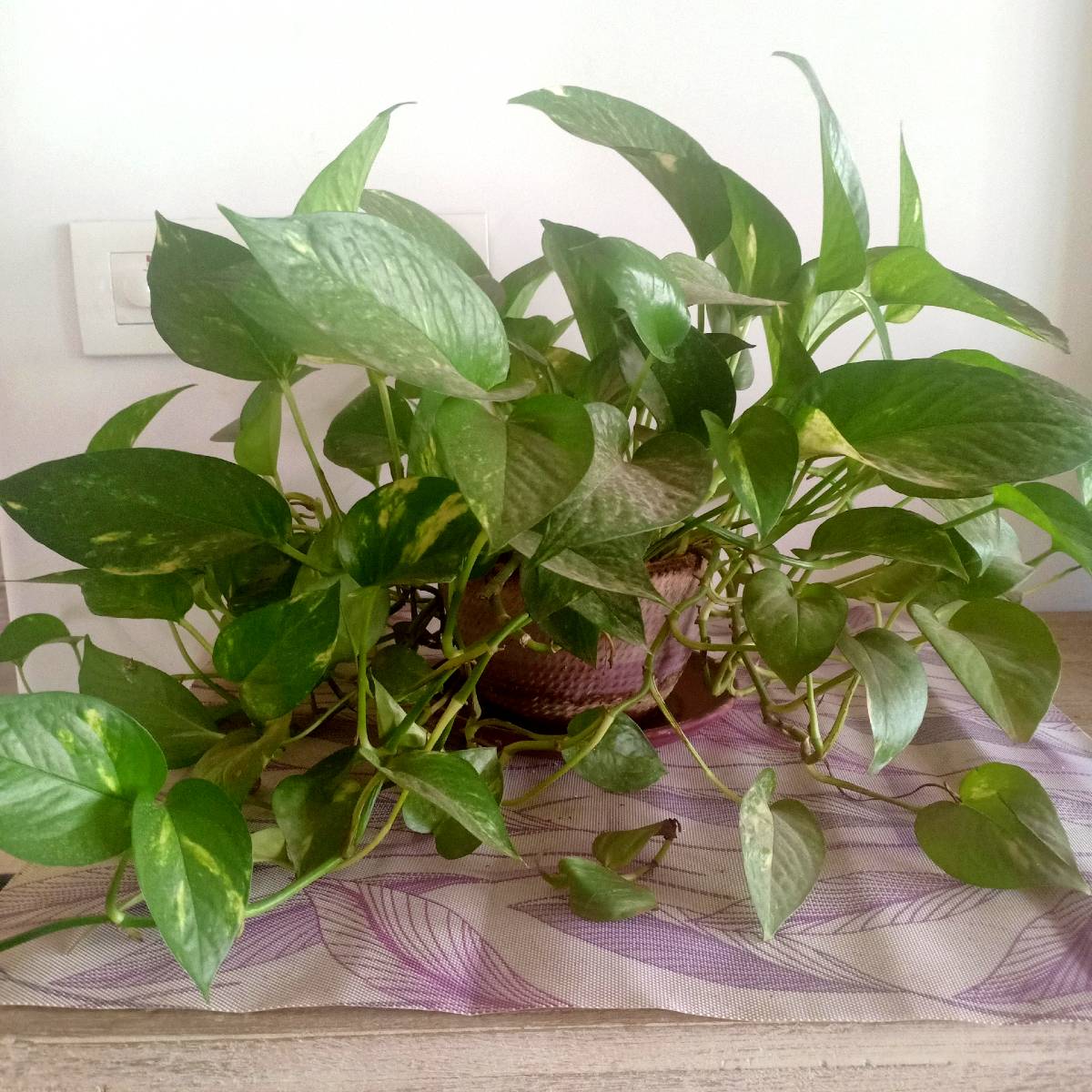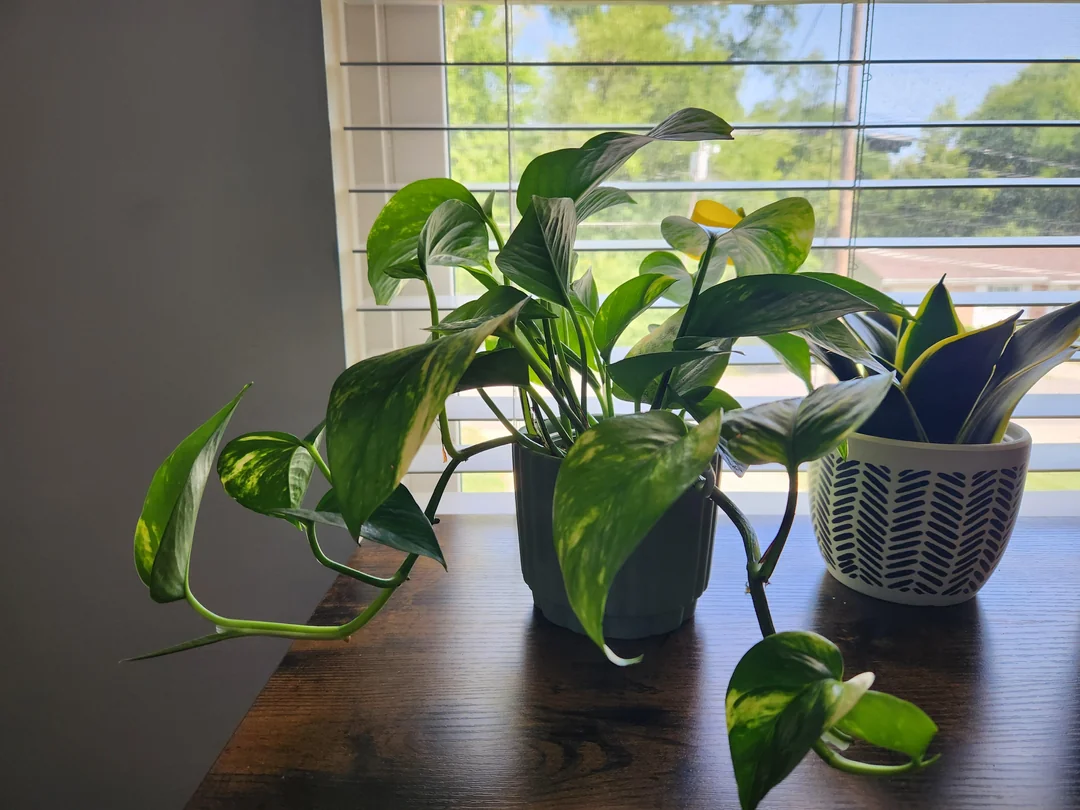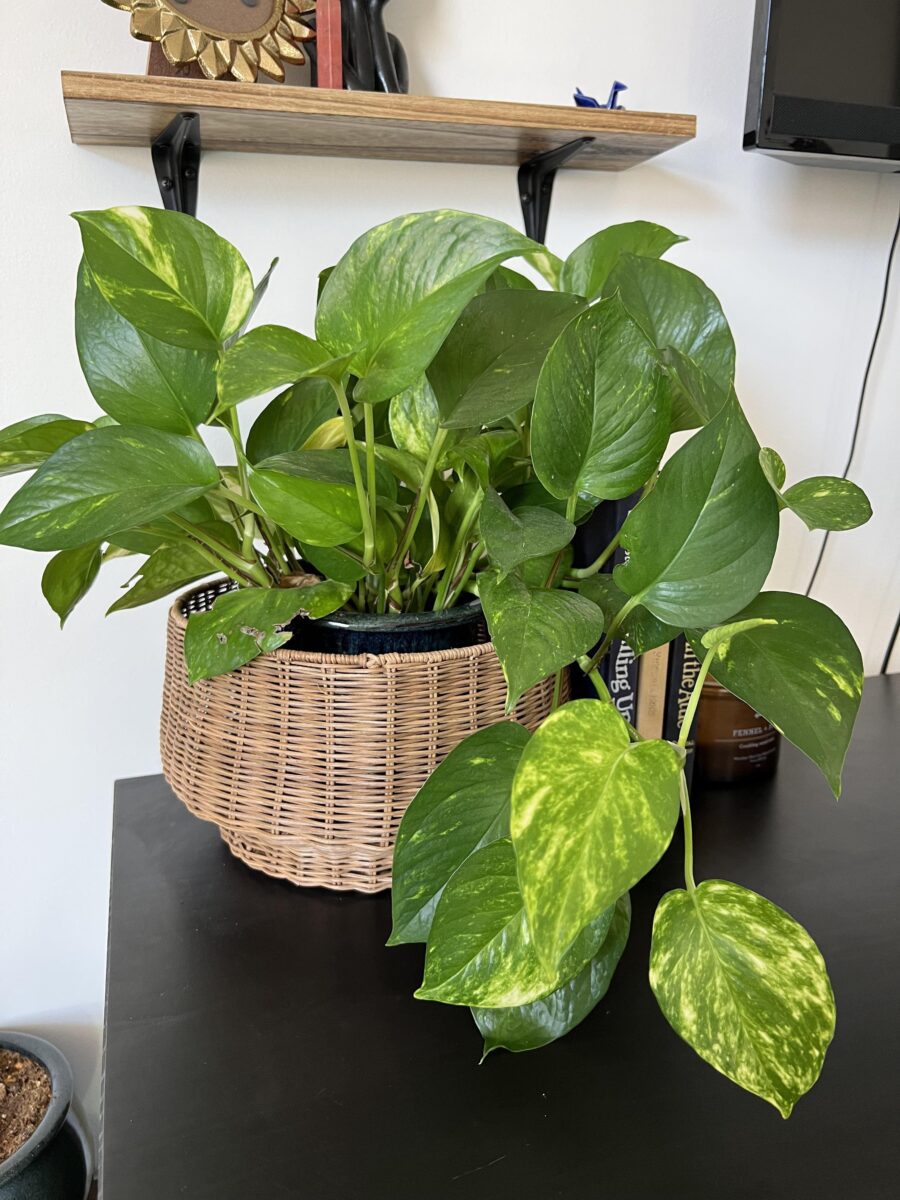
Pothos plants are wonderfully low-maintenance and can thrive in their pots for quite some time. Unlike fussier plants, they don’t demand frequent repotting, making them perfect for beginner gardeners or anyone with a busy schedule. In fact, pothos often prefer being slightly root-bound, so there’s no rush to upgrade their pot every year.
In this article
How Long Can Pothos Stay in the Same Pot?

For most pothos, repotting every 1-2 years is usually enough, depending on their growth rate and the size of their current pot. But how do you know when it’s time? Let’s dive into some repotting tips and care advice to make your pothos happy and healthy!
- Visible Roots: When you see more roots than soil, or roots poking out of the drainage holes, it’s often time to repot.
- Coiled Roots: If the roots have coiled around the edges of the pot and seem crammed, your pothos is likely root-bound.
- Root Color: Healthy roots should be firm and white or light tan. If you see dark, mushy roots, this could indicate root rot, which may necessitate repotting with fresh, well-draining soil.
When and How to Repot Your Pothos
1. Choose the Right Pot
Pick a pot that’s only 1-2 inches larger in diameter than the current one. Too much extra space can lead to overwatering issues. Make sure the pot has drainage holes—pothos hate soggy roots!
2. Use the Perfect Soil Mix
Pothos thrive in well-draining soil. Try mixing regular potting soil, perlite, and orchid bark in a 2:1:1 ratio. This combo keeps the soil airy and prevents water from pooling around the roots.
3. Repot in the Right Season
Spring and early summer are ideal for repotting. During these months, pothos are in their active growing phase, making it easier for them to adjust to their new pot.
4. Handle with Care
When removing your pothos from its old pot, be gentle! If the roots are tightly bound, carefully tease them apart. This encourages new root growth once they settle into fresh soil.
5. Mind the Depth
Plant your pothos at the same depth it was in its previous pot. Burying the stem too deep can cause rot, which no plant parent wants!
6. Post-Repotting TLC
After repotting, water your pothos thoroughly and place it in a spot with bright, indirect light. Hold off on fertilizing for about a month—your plant needs time to adjust to its fresh surroundings.
RELATED: Pothos Care Guide (with Photos)
Extra Beginner-Friendly Pothos Care Tips
What Kind of Light Does Pothos Need?
Pothos thrive in bright, indirect light but are surprisingly tolerant of lower light conditions. Just keep them out of direct sunlight, which can scorch their beautiful leaves.
How Much Should I Water My Pothos?
Let the top inch of soil dry out before watering. Overwatering is a common mistake, especially for new plant parents. If you’re unsure, it’s safer to wait an extra day—pothos are pretty forgiving of underwatering.
Can I Propagate My Pothos?
Absolutely! Pothos are one of the easiest plants to propagate. If your plant is getting too long, snip a stem with 2-3 healthy leaves, place it in water, and watch the roots grow. Once the roots are about 2 inches long, you can plant the cutting in soil.
What About Pests?
Pothos are generally pest-resistant, but they can occasionally attract mealybugs or spider mites. Check your plant regularly and wipe down the leaves with a damp cloth to keep pests at bay.
Should I Fertilize My Pothos?
During spring and summer, give your pothos a monthly boost with a balanced, water-soluble fertilizer diluted to half strength. But remember, less is more—over-fertilizing can do more harm than good.
How to Tell If Your Pothos Needs Repotting

Not sure if it’s time to repot? Look for these signs:
- Roots poking out of the drainage holes: This usually means the plant has outgrown its pot.
- Slow growth: If your pothos isn’t growing as quickly as usual, it might be running out of nutrients or space.
- Wilting despite watering: A root-bound plant may struggle to absorb water properly.
Every pothos is unique, and that’s part of the joy of growing them! Pay attention to your plant’s behavior—it will tell you what it needs. Whether you’re a beginner or a seasoned gardener, these versatile plants will reward you with lush, trailing vines and vibrant green leaves for years to come.
Happy gardening! 🌿
RELATED: 10 Durable Indoor Plants That Can Survive Some Neglect







